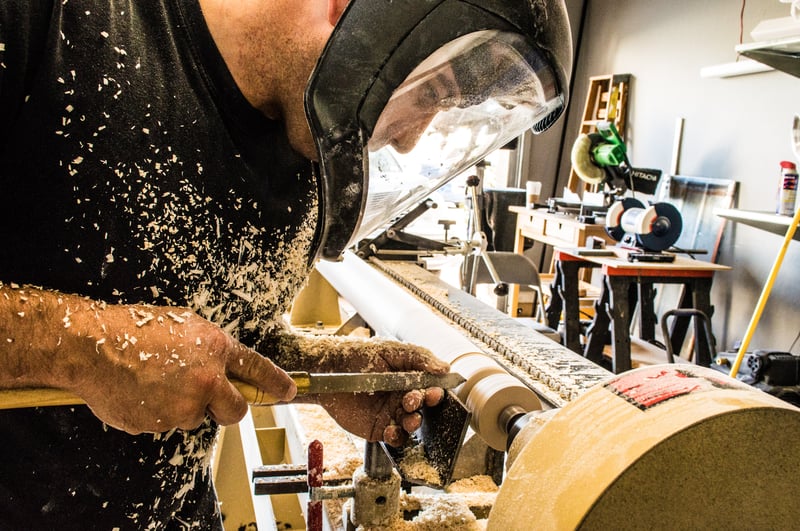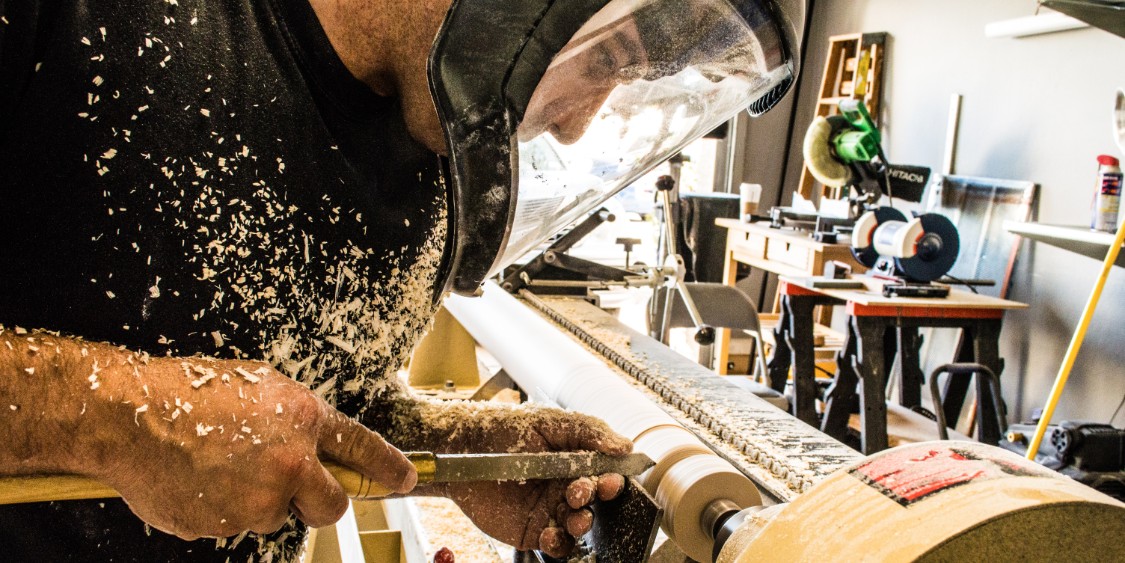
The woodworking industry has many obvious dangers, such as powerful machines with razor-sharp cutters. Less obvious, but no less dangerous, are the risks of fire and explosions due to wood dust.
Wood dust is a by-product of several different woodworking processes; dust particles vary in size and amount depending on the hardness of the wood and the sharpness of the cutter. Without proper education and infrastructure to contain this treacherous hazard, you risk endangering the lives of your employees and the success of your business. Read on for insight into reining in your business’ wood dust risks of wood dust.
Wood Dust Risks
Wood dust is an insidious risk. Although dust particles are barely detectable by the naked eye, wood dust still presents substantial health, safety, fire and explosion risks to your employees.
Wood dust can be so explosive that igniting only one small portion of a wood dust cloud can cause the entire thing to erupt into flames, possibly setting fire to every single piece of loose wood dust floating in the air. If this cloud is confined to an enclosed area, the pressure from the ignition can mount, reach critical mass and cause a disastrous explosion. Any unswept dust resting on machines or workspace floors is just as flammable, and can ignite on its own or catch fire from a dust-cloud fire. The fire can spread from the air to the ground and vice versa, quickly overtaking an entire space with flames.
In addition to the serious risks of fire and explosions, woodworking employees can develop several long-term, irreversible health problems through exposure to wood dust, including skin disorders, rhinitis, asthma and a rare type of nasal cancer.
What Causes Wood Dust?
The risks stemming from wood dust exposure can be controlled with the right information and infrastructure. To design an effective dust-reduction plan, you must first be aware which actions of your employees cause the most dust exposure. The following list contains the woodworking activities that generate the most amount of wood dust:
- Machining operations, especially sawing, routing and turning
- Sanding by machine and by hand
- Using compressed airlines to blow dust
- Assembling machined or sanded parts by hand
- Collecting dust from dust extraction systems
- Housekeeping
Controlling Wood Dust Risks
As the owner or manager of a woodworking business, you need to address any activities that produce wood dust. To do so, you should start by commissioning a suitable and sufficient risk assessment of your business, and then use your findings to prevent or adequately control your employees’ wood dust exposure.
- Apply the principles of good practice to control exposure. These principles include providing suitable personal protective equipment, among other precautions.
- Do not exceed any occupational exposure limit (OEL) for the certain type of wood dust.
- Reduce the exposure level of substances that can cause cancer or occupational asthma to as low a level as reasonably practicable. Even if your workplace improvements have reduced wood dust exposure to below the WEL, you must continue to implement improvements that lower the exposure level if it is reasonably practicable to do so.
Collecting Wood Dust and Waste
The nature of wood dust fires and explosions—which can be ignited by anything from naked flames to faulty electronics to impact sparks—necessitates dust collection systems that physically remove the wood dust from the machines that produce it. This helps lower the fire risk and any potential damage. These dust collection systems are called local exhaust ventilation (LEV). The three main types of LEV are:
- An isolated LEV that funnels wood waste from one or several machines and stores it in a nearby collection unit within the workshop
- An LEV connected to most, if not all, of the woodworking machines that sends wood waste to a distant collection unit located inside or outside the workshop
- A “through flow” system that ventilates wood waste from one or more woodworking machines to nearby collection units which then send the waste to a larger collection unit, usually located outside the workshop
The individual units that collect wood waste as part of a larger LEV are called “collection units.” They should ideally be sited outside, away from the workshop. If this is not possible, when planning your LEV infrastructure you must take several precautions that depend on the collector’s size, the number of people nearby, the presence of combustible materials and more.
We understand the risks you face in the woodworking industry. Contact the insurance professionals at the Axis Insurance Group to help you navigate these risks and plan for a safe, successful future.
Looking for additional ways to reduce health and safety hazards? Download our free Construction Content Package for tips and solutions for a safer job site!




